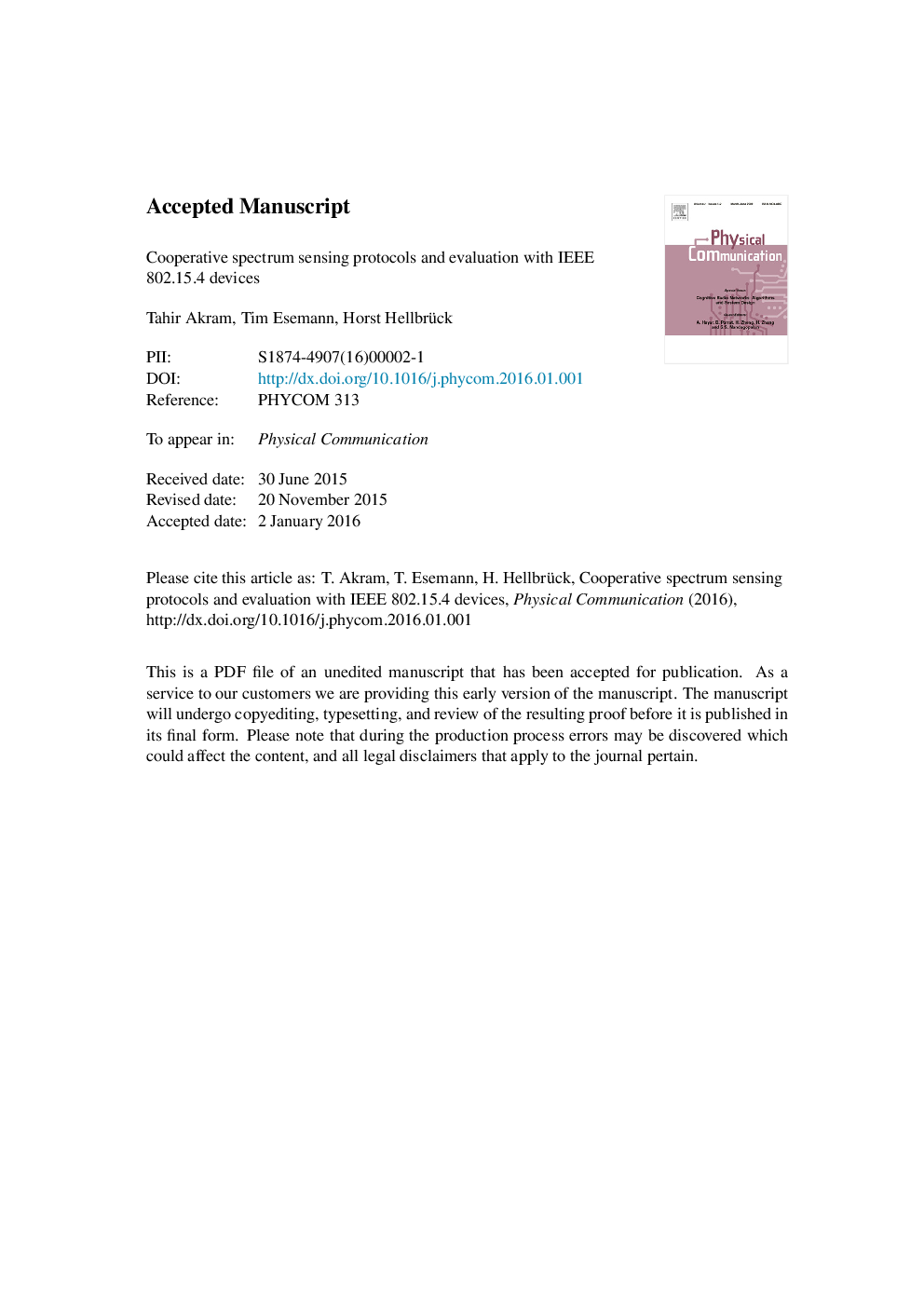| Article ID | Journal | Published Year | Pages | File Type |
|---|---|---|---|---|
| 6889448 | Physical Communication | 2016 | 28 Pages |
Abstract
Spectrum Sensing is one of the important tasks for wireless devices. By sensing the spectrum, wireless devices sense their radio environment and perform spectrum access accordingly to reduce collisions. Due to radio propagation effects and inherent noise in the measurements, performance of todays wireless technologies with individual spectrum sensing cannot solve the hidden node problem. Cooperative sensing is seen as a way to improve the performance of wireless devices improving the radio bandwidth utilization and minimizing interference among wireless devices. To the best of our knowledge, this is the first work which provides protocols for cooperative sensing and presents experimental results with IEEEÂ 802.15.4 devices. We present and implement protocols and applications for primary, secondary and cooperative users with a dedicated control channel. Thereby, the secondary user receiver serves as a first cooperative node in the system which reduces collisions between primary and secondary users. We evaluate the system performance with receiver sensing and additional cooperative nodes. We also propose a mechanism to extend the protocol for multiple secondary users sharing the same control channel. Based on the evaluations, we also provide recommendations for usage of cooperative sensing with focus on IEEEÂ 802.15.4.
Related Topics
Physical Sciences and Engineering
Computer Science
Computer Networks and Communications
Authors
Tahir Akram, Tim Esemann, Horst Hellbrück,
